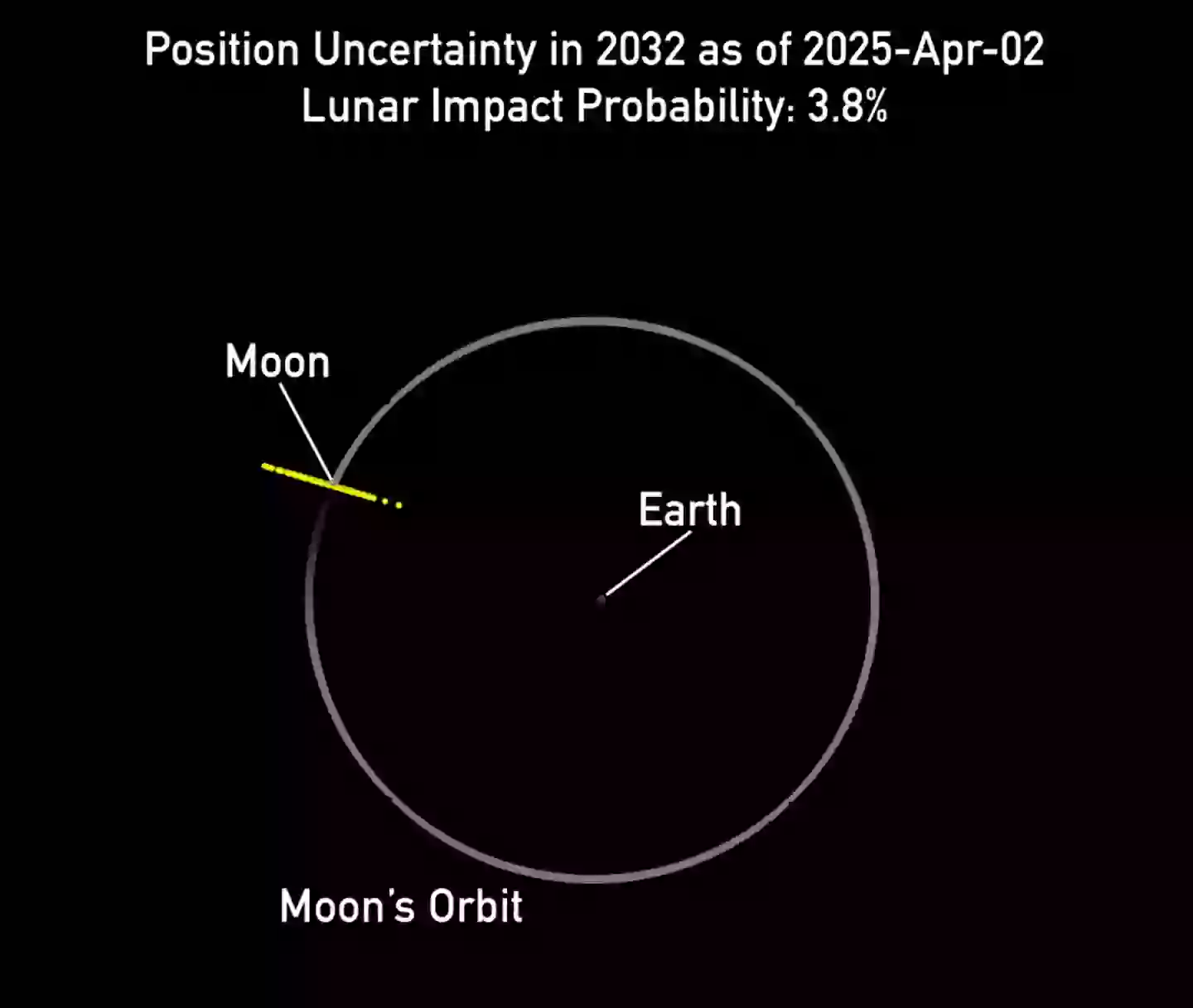.jpg)
NASA have given an update on the monstrous asteroid that is 2024 YR4.
Described a potentially 'city-destroying', the asteroid was first discovered by NASA in December 2024, and they've been monitoring it ever since.
Of course the first thing that comes to mind with asteroids like YR4 is its likelihood of it colliding with Earth.
Advert
Initially it was said that the giant space object had less than a two percent change of hitting our home planet, but this was later increased to 3.2 percent — making it the biggest threat to Earth in NASA's history at the time, beating the infamous 'God of Chaos' asteroid.
But fear not folks, this has since been dropped back down to a much less worrying 0.004 percent (as of February 2025).
The space agency said in a statement: "As observations of the asteroid continued to be submitted to the Minor Planet Center, experts at NASA Jet Propulsion Laboratory’s (JPL’s) Center for Near-Earth Object Studies were able to calculate more precise models of the asteroid’s trajectory and now have updated its impact probability on Dec. 22, 2032 to only 0.004% and found there is no significant potential for this asteroid to impact our planet for the next century."
Advert
And now, NASA has given another update on YR4 and its size, and apparently the asteroid is bigger than first thought.
.jpg)
Initial estimates given were 131-295 feet (40-90 meters), which came from 'visible light measurements from ground-based telescopes', it says.
But NASA now believes YR4 to be 74-220 feet (53-67 meters). They said this is 'about the size of a 10-story building'.
Advert
While there's a very, very small chance of the astroid hitting Earth, there is a slightly higher chance of it colliding with the Moon.
"Experts at NASA’s Center for Near Earth Object Studies at the agency’s Jet Propulsion Laboratory have updated 2024 YR4’s chance of impacting the Moon on Dec. 22, 2032 from 1.7 percent as of late February to 3.8% based on the Webb data and observations from ground-based telescopes," NASA explained.

The agency added: "There is still a 96.2 percent chance that the asteroid will miss the Moon. In the small chance that the asteroid were to impact, it would not alter the Moon’s orbit."
Advert
Should the asteroid hit the Moon, it would have minimal impact on us.
David Rankin, who works as an operations engineer for the University of Arizona's Catalina Sky Survey, said of the aftermath of the very unlikely collision: "There is the possibility this would eject some material back out that could hit the Earth, but I highly doubt it would cause any major threat."